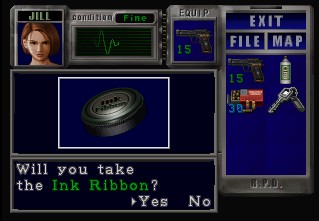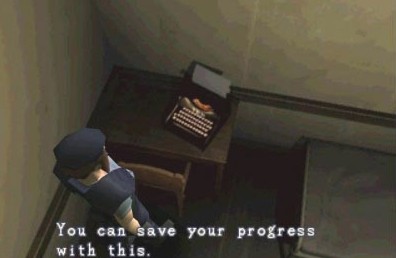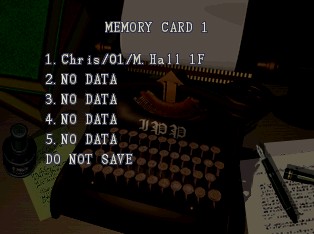
RetroHate
Resident Evils: Ribbon of Fate
The fact that a typewriter and ink ribbon would have a prominent place in video game history is certainly strange. Such an antiquated technology would seem to have no place in a modern entertainment medium; leave it to Resident Evil, the harbinger of survival horror games, to make saving your game progress as difficult and annoying as using a mechanical typing machine.

The concept behind the ink ribbon and typewriter in Resident Evil is certainly a creative one: you find ink ribbons scattered throughout the game and use them on typewriters located in “save rooms” placed around the environment. When you save your game at a typewriter, you expend an ink ribbon. If you don’t have an ink ribbon, you can’t save your game. If this is sounding a little convoluted, just wait.
Not only do you have to have an ink ribbon to save, but there are only a finite number of ink ribbons in the game world. This of course means you can only save your progress a limited number of times (the game conveniently doesn’t tell you how many) in each playthrough. Lastly, ink ribbons take up inventory space in a game where inventory space is at an extreme premium. Yes, an ink ribbon takes up as much “invisible backpack” space as a double-barreled shotgun. Cause vidya gamez.
So here we have a game that is specifically designed to make saving your progress as difficult as possible and actively DISCOURAGES you from saving often, like any normal gamer would. If you try to play Resident Evil like any normal gamer, you’ll likely find yourself half-way or more through the game, out of ink ribbons and unable to save. Then the game becomes a marathon sprint to the end, dodging every enemy you can (health items are limited as well), an experience not unlike early console games that lacked a save feature all together.
This limited save mechanic artificially extends the game’s length as you will inevitably (whether intentionally or not) start doing “suicide runs” where you make a mad dash through the game as far as you can until you die. Then, using your experience from the previous run, you can try to make it further or simply more efficient. This type of play, while interesting in theory, doesn’t really fit the theme of “survival horror” or “survival action” where the purpose of the game is to SURVIVE. Not, run-die-retry. While letting the player save and reload anywhere, anytime may have diminished the tension in the game, limiting the number of saves (especially without telling the player how many they had in the first place) is just annoying, frustrating and a cheap way to extend the game’s length through trial and error.
